When Charlotte, now 5, was about 18 months old, I discovered “Edwin Speaks Up,” written by April Stevens and illustrated by Sophie Blackall. The book originally caught my interest because the title character, almost-1-year-old Edwin, is quite the babbler, yet no one in his family can figure out the important things he’s trying to tell them.
At the time, Charlotte was similarly indecipherable. She’d say something three or four times and, eventually, I’d just have to smile and say, “Ok.” She had so much to say and she was so certain of herself; sometimes it just broke my heart not knowing what big ideas she wanted to share.
And while Stevens’ clever book certainly sympathizes with the unheard and overlooked younger child, over the years I’ve come to appreciate “Edwin Speaks Up” for its other wonderful themes, as well, particularly its hilariously accurate portrayal of the dreaded phenomenon we call “Mom Brain.”
The affected mother, in this case, is Mrs. Finnemore, a lovely ferret with five little ferrets to mind. The youngest Finnemore, Edwin, is about to celebrate his first birthday, and the story chronicles their trip to the grocery store to pick up sugar for Edwin’s birthday cake.
Can a children’s book actually be written about a trip to the grocery store, you ask? Of course! I’ll wager a bet that most moms have at least one whopper of a story from the grocery store aisles. I’ve made trips to Hy-Vee that have garnered a handful of good anecdotes in one go – fussy babies, misbehaving toddlers, blown out diapers, time outs, gawking strangers.
Mrs. Finnemore’s first challenge, as it is for many of us, is simply getting out the door. She can’t quite recall where she left her keys, and in the opening spread, we see her dashing about the house, in search mode, as a brood of exasperated ferret children wait reluctantly and little Edwin babbles unintelligibly on the floor.
Or maybe his babbles are more intelligent than we thought…
“Gloo poop SHOE noogie froo KEY,” Edwin asserts, to an oblivious audience.
Sure enough, Mrs. Finnermore eventually locates the missing keys inside her son’s shoe on the hall table.
Challenge #2 is loading her five children into the car. In the midst of refereeing arguments over who gets which seat and buckling Edwin into his carseat, Mrs. Finnemore ends up leaving her pocketbook on the roof of the station wagon, a fact only Edwin seems to note: “Figbutton noO noO pocKY BoOKY froppin RoOf.”
I’d be curious to see the results of a survey polling mothers on whether they’ve ever left their purse or wallet on the roof of the car and driven off. My suspicion would be that most have, because it’s an unfortunate feat of absent-mindedness that both the author, April Stevens, and I have in common with Mrs. Finnemore.
In Stevens’ case, she admits in the book’s dust jacket that her wallet once miraculously survived a 15-mile drive home from the supermarket. I was not as lucky – mine toppled off my car as I drove home from book club one blustery night. I discovered it missing well after midnight and had to trace my path back through the city’s snow covered streets until I found it.
Mrs. Finnemore is relieved to discover hers still in place when she arrives at Fineson’s Fine Grocery, because is there really anything worse that loading up all of the kids only to discover you left your money at home?
Well…I suppose I can think of one worse scenario: loading up all of the kids, somehow managing to complete your entire shopping trip before discovering AT THE CHECK OUT LANE!!! that you don’t have your wallet – been there, done that.
When the Finnemores finally make their way into the grocery store, more chaos ensues. The oldest four children upend a display of canned peas, then engage in a wrestling match in the produce aisle. Meanwhile, Mrs. Finnemore confuses someone else’s cart for her own, and takes off to get the all-important sugar, unaware that she’s forgotten her birthday boy.
“Did someone take my cart?” Mrs. Finnemore could hear Mrs. Lutzheimer call from aisle number one.
“However could someone lose their cart?” Mrs. Finnemore clucked and shook her head as she turned into aisle three.
Mrs. Finnemore’s obliviousness makes her carelessness all the more comical. And don’t we all pass those small judgements? “Oh, I would never do something so ridiculous!” And then we do. But how can we blame Mrs. Finnemore or ourselves, for that matter? How can one possibly expect the brain to function properly under such trying conditions? Just once I’d like to finish a sentence, finish a meal, finish a phone call, finish an email, finish a thought without being interrupted by somebody crying, somebody fighting, somebody asking for more milk.
Mrs. Finnemore’s blunder is eventually discovered and Edwin is reunited with his family but the sugar is lost in the process of sorting out the carts. Once more, only Edwin seems to have a clue.
“Rootin popel CART no no SWEETY,” he tells them.
Edwin tries again: “Gimpin chalk lil wiz um SWEETIN do a bye bye.”
His siblings are too distracted arguing over ice cream flavors and his mother, well…. she might just be in a Xanax haze because how else would a woman survive a trip to the grocery store with five kids without ever losing her cool? My face NEVER looks that blissful when I’m shopping with my kids!
Edwin, on the other hand, is becoming increasingly distressed, as his mother heads to the check out lane, unaware of the missing ingredient:
“Plopin grouff shooop CAKE sweet NO NO.”
“SWEETUM NO NO!”
“Oh, Edwin honey, is your diaper wet?” Mrs. Finnemore sighed.
Unheard and unobserved, Edwin decides to take matters into his own hands. He climbs out of the cart, crawls to the baking aisle, grabs the sugar, pushes it to the check out lane and plops it on the belt.
As the Finnemore’s head home to prepare for Edwin’s birthday (this time with the sugar on the roof of the car), Mrs. Finnemore remarks:
“Tomorrow is Baby Edwin’s birthday—he’s growing up so fast. Soon he’ll be talking. Can you even imagine that?”
Mrs. Finnemore’s statement reflects the ways in which many of us continue to view our youngest children as babies, long past the point at which they’ve transitioned to toddlers or older.
If Stevens’ story wasn’t amusing enough, Sophie Blackall’s illustrations are the cherry on the top. She’s taken some artistic liberties, giving the book an irresistible fifties feel, with that classic pastel color palette and everyone dressed in the fashions of the era, geometric fabrics and belted waistlines included.
Blackall’s illustrations are incredibly charming, but they also add a rich layer of detail to the story, particularly elaborating on the mischievousness of the Finnemore children: the looks of disdain when they’re informed of their impending trip to the store, Finney sticking his tongue out at his sister, Fergus giving Fiona the death stare during their ice-cream-flavor debate, and three of the four oldest children ransacking the dreaded candy displays that are so “conveniently” located in such close proximity to the check-out lanes.
In fact, Blackall’s pictorial storytelling is so wonderfully endearing that I often think of her name before the names of those who have authored the books she’s worked on. Some of my very favorites are “Big Red Lollipop” and “Ruby’s Wish,” and when my daughters finally corner me with that dreaded question (“Where do babies come from?”), I’ll be sure to get my hands on “The Baby Tree,” just released and also authored by Blackall.
 In the meantime, I’m enjoying this gorgeous signed print from Blackall, which I ordered from her fabulous Etsy shop to celebrate my husband’s and my 9-year wedding anniversary. The image is part of a collection of illustrations Blackall created that were inspired by amusing Craiglist “missed connections” personal ads. And if I didn’t already love Sophie Blackall enough, she packaged my print with these adorable extras!
In the meantime, I’m enjoying this gorgeous signed print from Blackall, which I ordered from her fabulous Etsy shop to celebrate my husband’s and my 9-year wedding anniversary. The image is part of a collection of illustrations Blackall created that were inspired by amusing Craiglist “missed connections” personal ads. And if I didn’t already love Sophie Blackall enough, she packaged my print with these adorable extras!
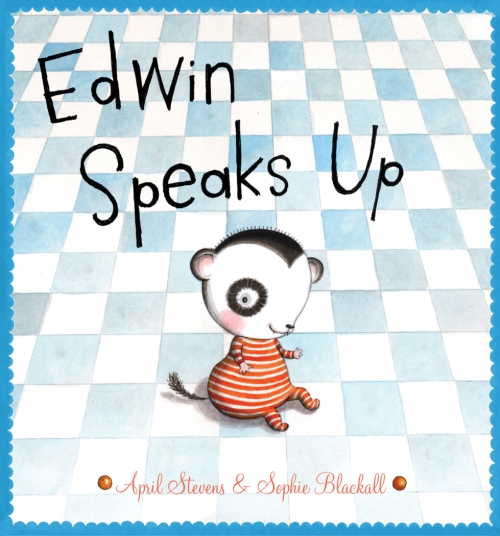
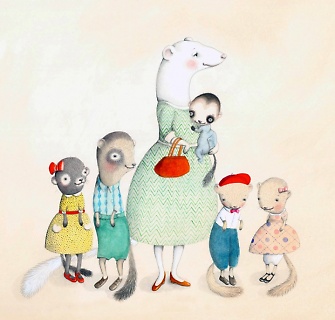
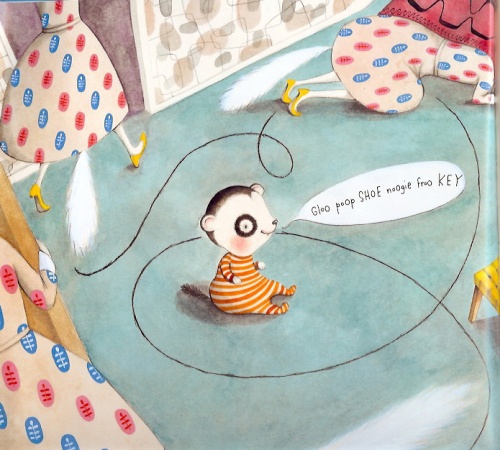
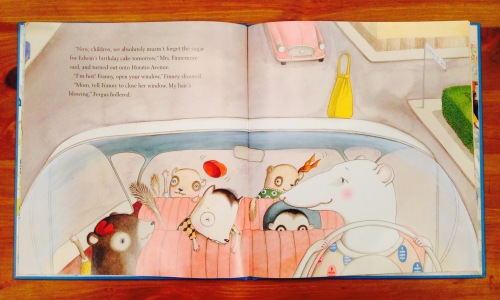
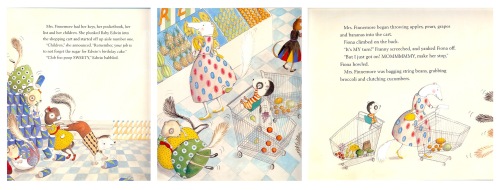
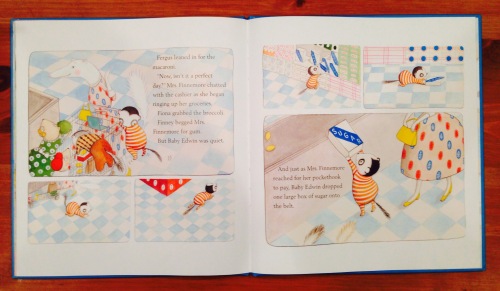



Leave a comment